
by Mark Smiley | Oct 23, 2017 | Travel
60,000 Attend The 36th Annual Event
by Jeff Stiglic and Mark Smiley

The 36th Annual Great American Beer Festival (GABF) was held October 5-7, 2017, at the Colorado Convention Center. Over 800 breweries poured 3,900 beers over the three-day fest hosted by the Brewers Association. Attendees surpassed 60,000 making it the largest attended GABF ever. It has come a long way since 1982 when it was held at the Harvest House Hotel in Boulder. There were 24 breweries, 47 beers and 800 attendees back then.
The state of Colorado won 38 medals as Glendale’s very own Bull & Bush Brewery took home a bronze medal for their Wood- and Barrel-Aged Beer called Woody Pils. Colorado tied their total from last year with an impressive lineup of entries. As an attendee who lives in Denver, it is nice to support the home team but it is also an opportunity to taste beers that are otherwise unavailable in this state. And, it is a chance to sample beers that are just starting distribution in Colorado such as Surly Brewing Company from Minneapolis, Minnesota, and Two Roads Brewing Company from Stratford, Connecticut.
“Having just launched our beers in the Colorado market, it was a great opportunity to gain brand recognition locally,” said Lizzy Shpitalnik, Colorado Sales Manager for Two Roads Brewing Company. “We also had Two Roads staff at the booth pouring our ten offerings at all times, so we were able to connect with festival goers on a deeper level.”
Two Roads was also invited to an event called What the Funk hosted by Crooked Stave Artisans. This event was one of many held outside the confines of the Colorado Convention Center. On Wednesday, October 4, 2017, The Studios at Overland Crossing played host to this year’s event. Attendees were treated to rare beers and adventurous concoctions that served as a great lead in to this year’s GABF.
The crew of Brewski-Reviewski not  only attended the three day GABF but also covered many of these events in and around town to see how they enhanced the week dedicated to beer.
only attended the three day GABF but also covered many of these events in and around town to see how they enhanced the week dedicated to beer.
Thursday, October 5, opening night of GABF, the crew started the first hour at the festival getting a feel for the layout of the hall so they would be able to easily navigate it on Saturday, October 7, after the awards ceremony. After that, it was off to Epic Brewing for the 5th annual 50 Firkin Fiasco.
The event was set up throughout the brewery with 50 specialty beers they brewed and collaborated with other breweries. Epic did not disappoint on this, with beers scattered everywhere to taste, and live music to set the mood. From standard beers like IPAs and stouts to beers brewed with sage and even one with Swedish Fish, this is a recommended event for next year.
Bierstadt Lagerhaus was the venue for the Beer Hall Brawl with Melvin Brewing from Wyoming. This event could be characterized by one word: crazy. The crew from these two places combined the in-house beer from Bierstadt with Melvin, having Hacksaw Jim Duggan wrestling with the team from Rocky Mountain Pro Wrestlers. The crowd enjoyed the theatrics of the wrestlers with some great German style beers.
Friday morning had two interesting events to choose from. Samuel Adams hosted its annual Brewers Brunch at Marlowe’s off 16th Street Mall. And, Oskar Blues promoted a Friends and Family Backstage Pass and Tour with a bus from Denver to the brewery in Longmont.
The Brewers Brunch organized and hosted by Samuel Adams is a

Sam Adams GABF brunch Friday, Oct. 6, 2017, in Denver. (Photo by Jack Dempsey for Boston Beer Company)
time-honored tradition and a chance for beer enthusiasts to engage in conversations about all things craft beer. Jim Koch, founder of Samuel Adams kicked off the event welcoming the capacity crowd to Denver. Koch started Samuel Adams in his kitchen in 1984 when imported and domestic beers were the only options for beer lovers.
A panel moderated by Bob Pease, President and CEO of the Brewers Association, included Koch and other craft brewers who shared their stories on what makes their breweries successful and the challenges they face.
Samuel Adams capped off the event by introducing its newest beer that will hit the market early next year called Sam ’76. It’s a beer that takes two active fermentations and blends them together with Cascade, Citra, Mosaic, Simcoe and Galaxy hops. It imparts a tropical citrus aroma that gives way to a bright, juicy citrus hop flavor but without the hop bitterness.
Turning to the Oskar Blues event, media and guests were greeted at the Longmont brewery with a pint of Fresh Hop Pale Ale. There were six groups each with 15-18 guests to walk through the brewery with head brewer Tim Matthews.
Part of the tour focused on the actual science that goes into the brewing process. The tour was followed up with a lunch provided by CHUBurger by Oskar Blues while Matthews described what goes into four of their beers: Mamm’s Little Pils, Pinner, Dales Pale Ale, and IPA. All in all, a tour at Oskar Blues is a good experience. They conduct tours every day of the week. Visit www. oskarblues.com for more information.
On Friday afternoon, Avery hosted a guided tasting with brewer Andy Parker at Hayter’s & Co. in LODO. Parker described each of the beers on sample at the ro oftop event while guests sampled them all. It allowed for plenty of time to try many of the beers offered by Avery and make it to the GABF on time.
oftop event while guests sampled them all. It allowed for plenty of time to try many of the beers offered by Avery and make it to the GABF on time.
The Awards Ceremony is the key event for brewers and a big part of why they participate in the festival. It is a chance for smaller breweries to win a medal and be recognized for the hard work they put into their beers. The medal winners were announced on Saturday morning, October 7.
Launch Pad Brewery in Aurora is a small brewery that took home a silver medal for session beers with a beer called Peacekeeper. “It’s a bigger feeling than I thought it would be, and it’s great to be recognized by your peers for your hard work,” said David Levesque, owner of Launch Pad Brewery.
The 37th Annual GABF will once again be held at the Colorado Convention Center but earlier in 2018. It will be held from September 20-22, 2018. Visit www.great americanbeerfestival.com for more details.
To listen to interviews with brewers, visit www.brewski-reviewski.podbean.com.
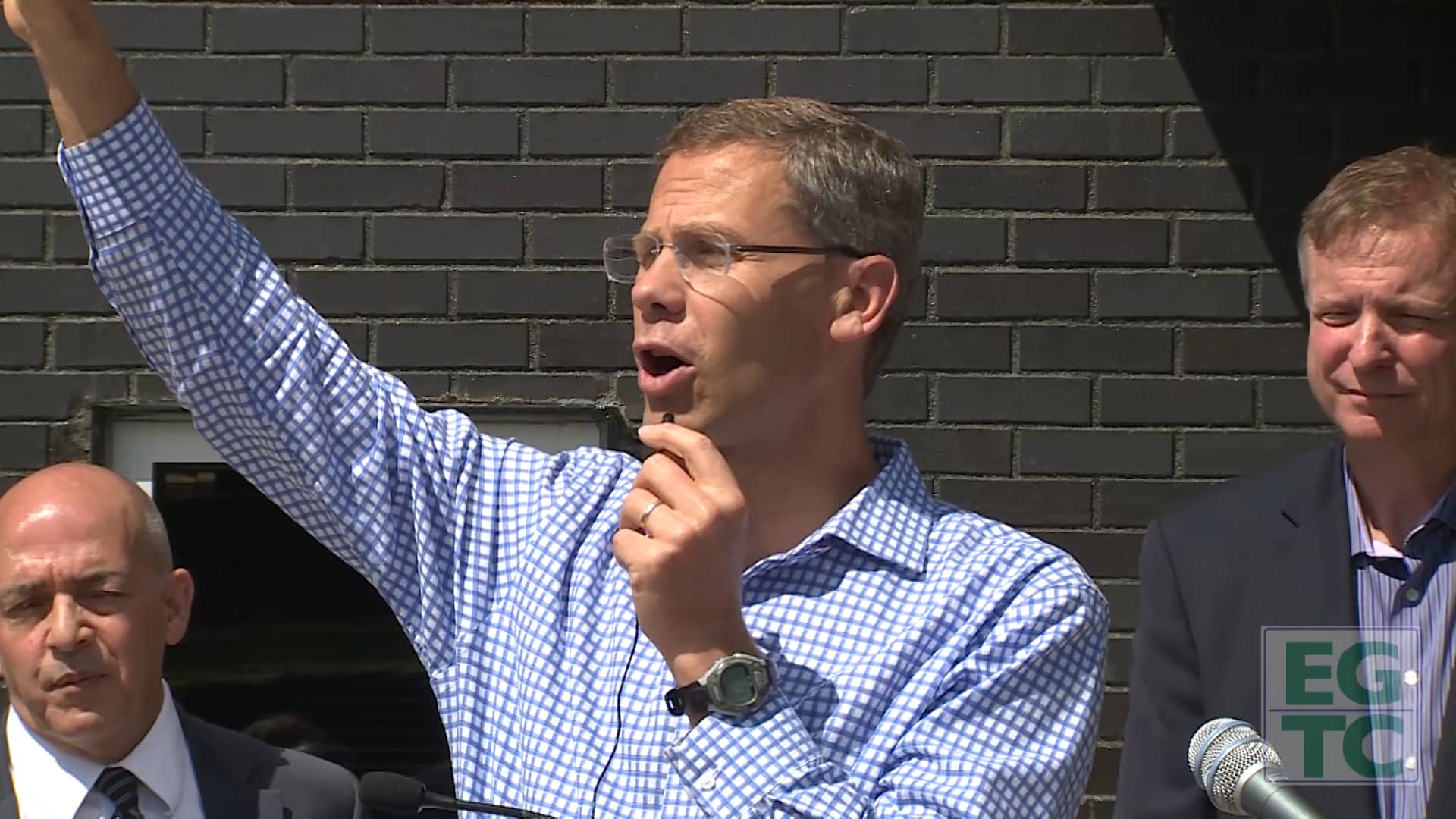
by Mark Smiley | Oct 23, 2017 | Main Articles
by Ruthy Wexler
Late in August 2017 a Denver school burst onto the national stage when videos of an East High cheerleader crying in pain from “forced splits” went viral. Media anchors across the country expressed shock and assured viewers that Denver Public Schools (DPS) Superintendent Tom Boasberg had fired the coach. Following an investigation, Boasberg removed two longtime staff from the school and said East could “now move forward.” But the Chronicle discovered that DPS had stepped over the real story in its rush to craft one more to its liking — and throw blame as far away as pos sible.
sible.
By the time Denver’s DA announced on October 14, 2017, that there was no basis to press criminal charges, three lives had been irrevocably upended.
How It Started
The videos that upset the world were taken in the first week of cheer camp, June 4-8. Ally Wakefield, the girl in the most-viewed video, showed it to her mother, who complained to East’s Athletic Director Lisa Porter.
On June 16, 2017, Porter met with the Wakefields, along with Principal Andy Mendelsberg, newly-hired Cheer Coach Ozell Williams and Vice Principal Terita Berry, a former Broncos cheerleader, who explained that the forced stretches were not uncommon in competitive sports, but she did not condone them.
Mendelsberg then instructed Williams to discontinue the forced splits. Williams agreed.
After school resumed in August, Porter invited all cheer parents to an August 24, 2017 meeting, where she, Mendelsberg and Berry would hear each parent’s c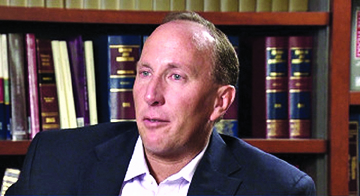 oncerns “so we can all work together to support the East Cheer Team.”
oncerns “so we can all work together to support the East Cheer Team.”
But that meeting never took place because on August 22, someone sent the videos to Channel 9 News.
Escalation
“What gets me is that Channel 9 didn’t do any investigative reporting,” said a longtime East teacher. “Once they showed it, everything changed.”
On August 23, 2017, Channel 9 aired the video; immediately, Denver Police opened a criminal investigation and Boasberg placed five DPS staff, including Mendelsberg and Porter, on administrative leave.
On August 25, 2017, Boasberg terminated Ozell Williams and shared that DPS would hire an “outside law firm to conduct an independent investigation.”
On September 22, 2017, Boasberg announced that Andy Mendelsberg would retire and Lisa Porter had resigned. The just-submitted report, said Boasberg, showed the two “did not take the necessary steps to ensure that the physical and emotional health and safety of students on the cheer team was fully protected.”
We Could Have Explained!
“We all knew Andy had followed proper procedure,” said Paul Prendergast, one of many parents upset at Mendelsberg’s departure.
Mendelsberg told those who contacted him, he “could not talk.”
“It was all hush-hush, don’t ask questions,” said a longtime East teacher. “Then it’s, ‘Oh, we have a new principal, isn’t this wonderful.’”
At a September 25, 2017, East Parent Meeting, Boasberg introduced John Youngquist, a former East principal who would return to that position. Boasberg told the hushed crowd that “due to the ongoing criminal investigation” he could not answer questions.
“I need to tell you, this was one of the most painful situations I’ve faced as superintendent … Lisa and Andy are colleagues and friends. But the Independent Report laid out in painful detail how our students’ safety was not properly cared for.”
A month prior, at a meeting with Boasberg, one student asked him, “Did you ever try to talk to any of us cheerleaders?”
“No.”
“Why not?”
“Because I have two daughters and the video upset me,” said Boasberg.
“That got me so angry,” the cheerleader later recalled. “Because we could have explained so easily.”
Story Behind Videos
Cheer mom Darcelle Carter says, “If I wasn’t a sport person, I might sit on my couch, see that video and say ‘Oh how awful!’ But I know better. If someone took a video of my basketball coach in high school m aking us do 30 suicides and all of us sweating and pleading … “
aking us do 30 suicides and all of us sweating and pleading … “
“Coaches push athletes,” said Nikki Higgs. “Cheerleading is now a very competitive sport. Not pom-poms and dress up. A majority of us parents loved how Coach Williams pushed our girls to excel.”
“Before the cheer camp, we’d gone to clinics and watched Ozell work with the girls,” said parent Ernest Higgs. “That’s where he demonstrated the stretch. No secret! We watched our daughter do the stretch. It hurt. But we understood, it was a coach pushing an athlete.”
Not Forced
“At camp, Coach O explained why the stretch helped, how it worked, that it might hurt,” said Aaliyah Ali.
“Coach went around and asked each girl if she wanted to do it,” said Shailee Morse. “It was voluntary. Not forced like the news said. Ally said she wanted to do it. The first time, she’s like, ‘I’m not comfortable.’ Ozell stopped. Then she wanted to do it again. They had a conversation. ‘If you do it, you gotta commit to being down for the full 30 seconds. Otherwise it won’t do you good.’ Ally said okay.”
“We all knew it would hurt,” said Nyla Higgs. “Coach said, whatever helps get us through, we should do, like cry, curse, whatever. Ally could stop at any time! But because of what she said before, we believed her crying was her way of getting through it. She never told us different.
“Afterwards, Coach went around and asked if anyone felt forced or bad about the stretch. No one did. Then we took a lunch break and danced the whole time, Ally too. That whole next week, we danced, went to Elitches, ran around.”
Lawsuits
“When it all came down, we were blindsided,” said cheer mom Annie Morse.
At least five sources attest they saw a post by Ally Wakefield on Facebook to the effect of: Watch how DPS will pay for my college tuition.
On CNN, Kristen Wakefield said, “[In that video] People are attacking my little girl and no one stopped them.”
“That’s for a lawsuit,” said one parent. “Attack? Don’t make me laugh.”
“Look at the video,” said cheer parent Darcelle Carter. “Those girls are holding her up.”
“Believe me, if you’ve got a pulled hamstring,” said Morse, “you don’t go dancing around like she did.”
“We’re not blaming [Ally], she’s too young to understand the consequences,” said Nikki Higgs.
The Wakefields’ lawyer did not respond to requests for comments.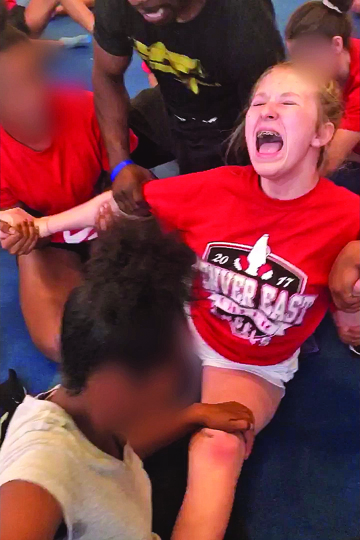
Not So Independent
DPS now refers all questions about the cheerleading incident and its aftermath to the official Report of Investigation Concerning Matters Involving the Denver East High School 2017/ 2018 Cheer Team, posted helpfully online.
But many aspects of this supposedly definitive report are troubling.
Instead of the promised “outside” law firm, DPS hired Davis Graham & Stubbs (Davis Graham), which the District has been paying $100,000 per year, with Deputy Counsel Michael Hickman the main contact in real estate transactions. DPS General Counsel Jerome Deherrera was an attorney at Davis Graham.
“The blatant conflict of interest is appalling,” said a Denver attorney.
One East parent read the whole 30 pages, “… only because I thought, soon I’ll see the part that made them let Andy go. Nothing! I’m a professional and I tell you, this report did not make sense.”
“What disturbs us,” said Ernest Higgs, “is that we shared our thoughts in good faith with the investigators. But in the report, they mention the T-shirts we wore but left out our full comments. That’s not a real investigation.”
Three Lives
Being principal of East was Andy Mendelsberg’s dream job.
Now, at 49, he’s cut adrift from the work and kids he loved.
While on leave, Mendelsberg wrote a four-page letter to DPS, laying out in earnest detail how he’d done his job correctly. He’d followed procedure by speaking (on June 16, for 13 minutes) with the school’s Human Resources Officer Saundra Stanfield. He contacted DPS’s legal department on June 18, had a 19-minute conversation about the videos with Michael Hickman, who did not ask for the videos or mention abuse. When Mendelsberg expressed concern that the videos might go viral, Hickman replied, “I think the process outlined after that meeting will ameliorate the situation.”
In the official Davis Graham report, Hickman says he asked for the videos and Mendelsberg refused.
Interviewed on October 16, an emotional Mendelsberg stated, “That is simply a lie.”
Mendelsberg, at least, is getting “continued payment” — DPS refuses to call it a settlement — from the District.
Lisa Porter, about whom colleagues say, “This school was her life,” got nothing.
Ozell Williams’ reputation is smashed.
Before he came to East, Williams was known in the tumbling world as “an incredibly caring, talented coach,” says former student Hannah Shelput. “Everybody knows he is not that person depicted in the press.”
Over a dozen parents came forward to say how positively Williams’ coaching affected their children. “Ozell overcame obstacles. He gets very excited about others overcoming obstacles,” said Shalondra Haggerty.
Mariah Cladis, assistant coach at East, said, “I just wish people knew about the numerous meetings Ozell and I had. He got so excited about making the girls laugh or thinking how to steer them toward college.
“Maybe a little too ambitious for them sometimes, but oh, he would never hurt them. That’s not what was going on.”
Since DPS fired Williams, his business Mile High Tumblers has suffered. He’s had trouble finding work. Even reporting the ‘no basis for criminal charges’ story, media outlets continued to describe Williams as “the coach that physically forced girls into splits.”
“It’s like Ozell was just … a forgotten person,” said Carey. “How can you do that, leave someone behind in the dust?”
And For What?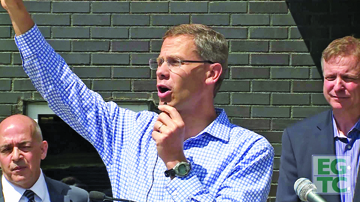
To address this crisis, DPS hired the PR firm Ground Floor Media, Flynn Investigations, Davis Graham attorneys charging between $385 -$485 per hour for many hours of interviews; and made a substantial financial arrangement with Mendelsberg.
All the above is paid for with taxpayer money.
And for what?
“Why would DPS want to get rid of a principal who made East better and better until it was the most requested high school?” said parent Megan Ackley. “It doesn’t make sense.”
A source close to DPS said it does make sense. “Boasberg has been upset with East’s ever-increasing importance, how it keeps getting bigger. He wants to cut it back. And at such a visible high school, Boasberg prefers to have someone he can manage.”
From all accounts, Mendelsberg was an outspoken individual who let his teachers teach.
Did Boasberg see the cheerleading incident as a way to get rid of Mendelsberg?
Why didn’t the whole thing stop when Williams agreed “no more forced splits?”
Why did DPS cave to a few families’ threats of lawsuit? Why didn’t they — as Nikki Higgs plaintively asks, “… let the cheerleaders — the real eyewitnesses! — tell what really happened?”
As long as the Board remains silent, and DPS continues to shroud its doings in secrecy, we won’t know the answers.

by Mark Smiley | Oct 23, 2017 | Main Articles
Denver City Council Votes 8-5 In Favor
by Lisa Marlin
 On a cool autumn Saturday morning in a northwest Denver neighborhood, children ran through leaves in their front yard, a young man walked a small dog down the sidewalk, and an older woman swept her front porch. If not for the modern clothing they wore and the kinds of cars parked along the curb, an outsider might think they’d stepped back in time because many of the houses here date back to the late 1800s and early 1900s. Most of the homes’ exteriors have changed little over time and now they never will, at least not substantially.
On a cool autumn Saturday morning in a northwest Denver neighborhood, children ran through leaves in their front yard, a young man walked a small dog down the sidewalk, and an older woman swept her front porch. If not for the modern clothing they wore and the kinds of cars parked along the curb, an outsider might think they’d stepped back in time because many of the houses here date back to the late 1800s and early 1900s. Most of the homes’ exteriors have changed little over time and now they never will, at least not substantially.
An 8-5 vote by the Denver City Council in their September 25, 2017, meeting approved the designation of a Landmark Historic District for Preservation of Packard’s Hill, making it the city’s 53rd historic district. Voting in favor of the historic district were councilmembers Brooks, Espinoza, Clark, Kashmann, Kniech, López, New and Ortega. Councilmembers Black, Flynn, Gilmore, Herndon and Susman voted against.
Located near Highland’s Square’s trendy shops and restaurants, the area is approximately within the bounds of Lowell Boulevard and Osceola Street between 32nd and 35th Avenues in West Highland.
The designation ensures the preservation of 173 older homes within the district, known as contributing structures. Demolition of the homes and new builds, while not forbidden, are now strictly limited. A month following the vote, residents on both sides of the issue talked about its impact.
“It means that we can walk up and down our neighborhood and continue to enjoy the fabulous history and character and feel that it is being honored by the city of Denver and the neighbors,” said Marie Benedix who has lived in the neighborhood 10 years. In 2015, Benedix began working with Historic Denver, in partnership with the West Highland Neighborhood Association (WHNA) that received a State Historical Fund grant to research and survey the neighborhood. She would garner 77 signatures of neighbors who supported the designation. She is relieved the ordinance passed.
But not everyone is pleased including Kevin O’Connell who bought a Victorian house here in 1995 with his wife, adding a contemporary home on an adjoining lot in 2003. “All the repairs you do on your house will cost more money,” he said, explaining how the designation adds steps to the city review process for exterior home improvements and additions. Furthermore, he said, “If something happens to our non-contributing structure, we can’t put it back the way it is.”
This is why he organized a group earlier this year called Keep West Highland Free. The group collected 75 signatures to petition against the designation. “We did everything we could in our power as a grass roots organization,” O’Connell said. “Unfortunately, the process is really stacked…”
The public hearing during the council meeting lasted five hours as 80 people representing both sides gave their views.
“With a split constituency, I have to ask my self, what are the consequences of this vote either way?” said Rafael Espinoza who represents Council District 1 where West Highland is located. He expressed surprise at the number of people in opposition, not having been given their petition until that night, but he felt that the criteria for historic designation had been met and it would be better overall for the area. “We’re losing history at an alarming clip. In the other conversations we’ve had about where all the demolitions in Denver are occurring, over 80% of them are in District 1. I believe as the LPC [Land Planning Commission], that it should go through.”
self, what are the consequences of this vote either way?” said Rafael Espinoza who represents Council District 1 where West Highland is located. He expressed surprise at the number of people in opposition, not having been given their petition until that night, but he felt that the criteria for historic designation had been met and it would be better overall for the area. “We’re losing history at an alarming clip. In the other conversations we’ve had about where all the demolitions in Denver are occurring, over 80% of them are in District 1. I believe as the LPC [Land Planning Commission], that it should go through.”
Also in favor was Wayne New of Council District 10. “I have the highest percentage of historic districts in the whole city. I have the high-end Country Club that loves their historic district as much as the moderate priced Alamo Placita. All I get is overwhelming support for their districts because it protects the character of their district. It does deter development that changes character.”
Mary Beth Susman of Council District 5, known for being in favor of high density development in virtually all cases, voted against it citing that the opposition did not have equal access to city resources to prepare their case. “I did speak with Planning last year to ask ‘let’s open this up and take a look because I think both sides should have access to the same city resources.’ I feel very strongly that compromise can be worked out.”
Kevin Flynn of Council District 2 also voted against it. “Because of the deep division in the community, I really believe that this needs more consensus so I believe I have to oppose this.”
A few weeks later, O’Connell said he is still taken back by the vote of the council. He is considering turning one of his homes into rental property, as some of his neighbors have told him they may do as well. “It took a lot of fight out of everyone. It lasted a long time and was a grinding process,” he said. “It has really torn the neighborhood apart.”
On the winning side, Benedix agreed that it was a lot of work, as did Marilyn Quinn from the WHNA design and preservation committee. She lives in the neighboring Ghost Historic District and helped prepare the application. “It has been all-consuming at times and we are very happy that the majority of council agreed with us,” Quinn said. Her committee is planning to offer free design review consultations to help homeowners with the historic guidelines, such as knowing that they can paint their homes any color they choose, but window and door replacements require design review, and contributing structures may only be demolished if economic hardship is established at a public hearing of the Landmark Commission.
Benedix said she’s generating ideas to make the history of Packard’s Hill more available to people who come to visit the area. “It is important to know we have these connections and ties to the people who came before us,” she said.
More information about the Packard’s Hill Historic District and links to the historic guidelines can be found at www.historicdenver.org/packards-hill-proposed-historic-district/.

by Mark Smiley | Oct 23, 2017 | Editorials
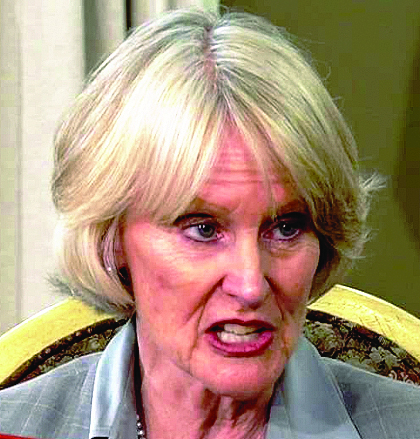
Beth McCann
The strange short career of Beth McCann as District Attorney of Denver gets darker virtually every day. As reported in our August editorial McCann had gone on the Craig Silverman Show on 710 KNUS to explain why she had not charged illegal alien Ricardo Lopez-Vera in the jailhouse death of William Anderson. She claimed that her chief deputy (apparently Ryan Brackley) had determined that the death was a matter of self-defense in a one punch landed fight after which Anderson had then fallen down and hit his head.
She declared the whole matter had taken no more than 12 seconds and a deputy sheriff had rushed up and saw Anderson in a wobbly state and falling down. She declared that there was only one witness to the actual fight who said it was a mutual combat scenario with Anderson throwing the first punch which missed and when Anderson was drawing back to throw another punch Lopez-Vera hit him causing Anderson to fall and hit his head on a step.
Without even waiting for a formal coroner’s autopsy report she declared Lopez-Vera innocent due to self-defense. Two days later she had him released on a de minimis $1,000 bail. He was then purportedly given a lift by the deputies to a hospital after which he disappeared.
The problem for McCann was that sheriff’s deputies who saw the mangled and battered body of Anderson knew that it could not have been caused by a one-punch fight and leaked that McCann was lying.
Federal ICE agents were also outraged that McCann refused to honor federal retainer requests and accused her of harboring and hiding a criminal illegal alien. McCann is a strong advocate for sanctuary city policies but even she does not go so far as publicly declaring that murder is allowable in Denver by persons illegally in the country.
It turns out McCann knew exactly where Lopez-Vera was after he was released from police custody since she had him on a monitored ankle bracelet. As far as the assertion the death was due to “self-defense” C.R.S. 18-1-704 explicitly states a claim of self-defense is not valid in the case of mutually agreed combat and, furthermore, there is no such thing as legal mutually agreed upon combat inside of a city jail.
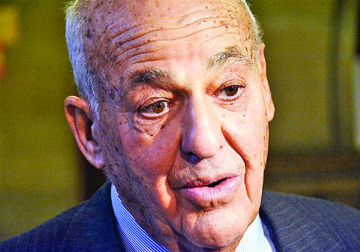
Cyril Wecht
The Denver coroner has now issued the autopsy and it is clear that the so-called one punch fight was an utter fabrication. World famous forensic pathologist Cyril Wecht, who has performed 20,000 autopsies and supervised or reviewed 40,000 more, went on the Craig Silverman Show and declared that the multitude of head injuries, including the injuries to both sides of the neck, and injuries to the lower back could never have happened from a one punch fight where the victim fell down and hit his head. Apparently, it is far more likely that after punching Anderson, Lopez-Vera grabbed him by the neck and smashed his head into the concrete and then kicked the dying or dead Anderson.
The one witness to the fight appears to have been a gang member lookout for Lopez-Vera. What about the Deputy Sheriff statement that he was there in under 12 seconds and watched the wobbly Anderson falling over and hitting his head? In fact, we only have McCann’s claim to the same as the Sheriff’s Office is refusing to release to the press the Sheriff’s Report on the incident claiming the matter is confidential, since it is still under investigation. But, of course, the DA is not investigating the Anderson killing any more as she has publicly declared the same to be a matter of “self defense.”
As for DA McCann, she has gone into hiding, refusing to comment on the matter, having been caught red-handed lying about the facts of the case by Cyril Wecht.
Sheriff deputies and ICE agents want a grand jury empaneled by the U.S. Attorney’s office with McCann and her chief deputy Brackley indicted for conducting a fraudulent investigation and harboring an illegal alien in violation of federal law. Unfortunately for law enforcement, the Acting U.S. Attorney for the District of Colorado is Bob Troyer. He was an attorney in the Brownstein, Hyatt, Farber and Schreck law firm which means he is highly politically connected with the legal cesspool in Denver run by the Brownstein law firm that protects persons like DA McCann.
Some in law enforcement hope that a regular U.S. Attorney for Colorado will soon be appointed who is not part of and controlled by the Brownstein firm but they realize that the firm has its tentacles virtually everywhere as stated by journalist David Sirota. [Glendale Cherry Creek Chronicle, Editorial, October 2017, page 3.] Additionally they have apparently sworn that they will not stop in their pursuit of bringing DA Beth McCann to the bar of justice.
— Editorial Board

by Mark Smiley | Oct 23, 2017 | Feature Story Bottom Left

Shideh Kerman
by Shideh Kerman, BS, MBA
AFC Urgent Care Denver
On October 13, the White House press office announced that the administration would stop Obamacare subsidies or Cost-Sharing Reductions. These subsidies were designed under Obamacare to help low or moderate income Americans with their out of pocket expenses if they buy insurance through one of the Obamacare plans. There’s a lot that’s still uncertain about how this action will change the health law.
How do cost-sharing reductions work?
The Cost-Sharing Reductions or CSRs were federal funding to insurance companies to reduce the out-of-pocket expenses of low to moderate income individuals and families that would purchase one of the Obamacare health plans. The CSRs were a pass-through from the government via insurance companies to the patients.
“These subsidies are not a bailout — they are passed from the federal government through health plans to medical providers to help lower costs for patients who see a doctor to treat their cancer or fill a prescription for a life-saving medication,” America’s Health Insurance Plans and the Blue Cross Blue Shield Association said in a joint statement.
What will this mean for people who get insurance through their employers?
Consumers that get healthcare coverage through large companies that offer insurance, will see minimal changes. But if you work for a small business, there is a high chance that you will see more changes to your healthcare coverage. The executive order asks the Labor Department to loosen rules that permit small companies to band together to form associations and buy the kind of coverage available to larger businesses. These association health plans would be subject to federal employment law and not state insurance regulations. That means that the health plans would have far fewer rules benefits.
Small businesses that decide not to join such associations might face higher premiums in the exchange market.
How would eliminating cost-sharing reductions affect people who buy their own insurance?
It’s complicated. The proposed amount of subsidies in 2018 by insurance companies was estimated around $7 billion. With the executive order cutting this funding the biggest risk to consumers is that insurance companies will drop out of the market for next year. That makes the exchange markets less attractive for consumers.
Colorado has a state-run exchange, which is called Connect for Health Colorado. Our state is among just 12 states (including DC) that are running their own exchanges and enrollment platforms coverage. Although some insurance companies exited the Colorado exchange, Connect for Health Colorado is still among the most robust exchanges in the country, with seven insurance companies offering plans.
Insurance companies that opted to stay on the exchange market would raise their premiums to make up for the lost subsidies.
Analysts say that marketplace insurers across the country would likely raise premiums for silver plans, which is anywhere from 9 to 27 percent.
These premium increases were approved based on the assumption that CSRs funding would continue to be made to insurance companies. Insurance companies agreed to later add another 6 percent to premiums if CSRs funding were to be eliminated. So now that the CSR funding has been eliminated the average rate increase will be about 32.7 percent, instead of the previously estimated 27 percent.
But this increase in premiums doesn’t mean that all the consumers that purchase health insurance in the market place will pay more. Under the Affordable Care Act (ACA), tax credits for purchasing health insurance in the marketplaces are designed to limit consumer’s premium contributions to a percentage of their income. Families and individuals making between 100 percent to 400 percent of the poverty level will receive tax credits, which will offset the premiums increases.
So for low or medium income people who are eligible for tax credits the premium increases for 2018 will be offset by tax credits.
A recent study by Kaiser Family Foundation shows that for a 40-year-old non-smoker in Denver that earns $30,000 a year, he or she will actually pay 3 percent less, after tax credits, for the second-lowest-cost silver health plan in 2018.
So Consumers who get insurance through market exchanges using government subsidies won’t notice much of a change in price, but they might see fewer options in the future.
Consumers who won’t be eligible for any subsidies that used to purchase their health insurance through exchange markets will be most affected by the CSRs funding cuts. Higher premiums and less choices will make the exchange market less attractive, thus many consumers will leave the exchange market leading to more uninsured people.

 only attended the three day GABF but also covered many of these events in and around town to see how they enhanced the week dedicated to beer.
only attended the three day GABF but also covered many of these events in and around town to see how they enhanced the week dedicated to beer.
 oftop event while guests sampled them all. It allowed for plenty of time to try many of the beers offered by Avery and make it to the GABF on time.
oftop event while guests sampled them all. It allowed for plenty of time to try many of the beers offered by Avery and make it to the GABF on time.













